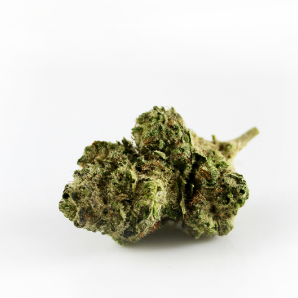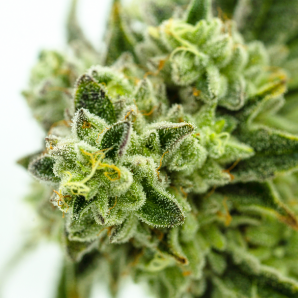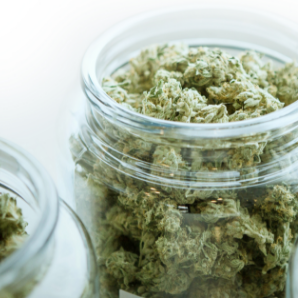Cannabis has been used as a remedy for thousands of years and is deeply rooted in human history. Before synthetically produced active substances dominated the market, cannabis was also a respected medicine in Western conventional medicine.
It is a great achievement of modern society that cannabis as medicine is once again available to patients in Germany—enhanced by the knowledge of modern research and entirely new quality standards.



Both in the past and today, cannabis is used to relieve a wide range of symptoms and health complaints. This broad spectrum of effects is due, on the one hand, to the numerous compounds found in the cannabis plant, which produce various therapeutic effects and can therefore support people with very different medical conditions.
On the other hand, every human being has an endogenous cannabinoid system, known as the endocannabinoid system (ECS). This means that not only plants produce cannabinoids (phytocannabinoids such as THC and CBD), but the human body also produces its own cannabinoids, called endocannabinoids.
Recent research suggests that a deficiency of the body’s own cannabinoids may be linked to chronic pain, migraines, fibromyalgia, depression, anxiety disorders, and many other illnesses (1–4). The plant-based cannabinoids THC and CBD can help counteract this deficiency and produce therapeutic effects (5–6).
Because of its individual effects and wide range of therapeutic applications, cannabis is used in Germany to treat a variety of illnesses. Observational data collected by the Federal Institute for Drugs and Medical Devices (BfArM) clearly shows that cannabis is prescribed not only for pain, inflammation, and cancer but also for a wide range of neurological and affective disorders (7).
Since 2017, patients with severe illnesses in Germany have been entitled to receive medicinal cannabis if conventional treatments have been ineffective or have caused severe side effects. In such cases, statutory health insurance covers the cost of therapy, provided there is a prospect of alleviating serious symptoms through cannabis flowers or extracts (8).
Since April 1, 2024, it has also been possible to obtain cannabis by prescription without first having to prove the ineffectiveness or severe side effects of other medications. However, in these cases where patients are not considered “fully treated” with other therapies, they must cover the costs themselves. Individuals with conditions not classified as severe can also access medicinal cannabis if there is a prospect of improvement. In these instances as well, the full cost of treatment must be borne by the patient.
In principle, any private or statutory health insurance physician (except dentists and veterinarians) in Germany may prescribe cannabis extracts or flowers. If the prescription is intended to be covered by statutory health insurance (GKV), certain specialists can prescribe cannabis without prior approval from the insurance provider. In all other cases, an application including a physician’s questionnaire is required.
Sources:
[1] S. C. Smith and M. S. Wagner, “Clinical endocannabinoid deficiency (CECD) revisited: can this concept explain the therapeutic benefits of cannabis in migraine, fibromyalgia, irritable bowel syndrome and other treatment-resistant conditions?” Neuroendocrinology Letters, vol. 35, no. 3, pp. 198–201, 2014.
[2] Henson JD, Vitetta L, Quezada M, Hall S. “Enhancing Endocannabinoid Control of Stress with Cannabidiol.” Journal of Clinical Medicine. 2021 Dec 14;10(24):5852.
[3] Russo EB. “Clinical Endocannabinoid Deficiency Reconsidered: Current Research Supports the Theory in Migraine, Fibromyalgia, Irritable Bowel, and Other Treatment-Resistant Syndromes.” Cannabis and Cannabinoid Research. 2016 Jul 1;1(1):154-165.
[4] Russo EB. “Clinical Endocannabinoid Deficiency Reconsidered: Current Research Supports the Theory in Migraine, Fibromyalgia, Irritable Bowel, and Other Treatment-Resistant Syndromes.” Cannabis and Cannabinoid Research. 2016 Jul 1;1(1):154-165.
[5] Di Marzo V. “Targeting the endocannabinoid system: to enhance or reduce?” Nature Reviews Drug Discovery. 2008 May;7(5):438-55. doi: 10.1038/nrd2553. PMID: 18446159.
[6] NIDA. 2021, April 13. “How does marijuana produce its effects?” URL: https://nida.nih.gov/publications/research-reports/marijuana/how-does-marijuana-produce-its-effects (Accessed: 28 April 2025).
[7] BfArM (Federal Institute for Drugs and Medical Devices), July 6, 2022. Final Report of the Accompanying Survey pursuant to § 31 Section 6 of the Fifth Book of the Social Code on the Prescription and Use of Cannabis Medicines.
[8] Medical Service of the Federal Republic of Germany (2023/2024). Assessment Guidelines: Social-Medical Evaluation of Cannabinoids according to § 31 Section 6 SGB V. Effective as of April 26, 2024. https://www.medizinischer-dienst.de
Medicinal cannabis works through the endogenous cannabinoid system.
The body’s own cannabinoid system, also known as the endocannabinoid system (ECS), was discovered in 1988 and is deeply rooted in our evolution. As a signaling and control system distributed throughout the entire body, it is essential for maintaining homeostasis — the balance of important physical and mental functions (1).
The ECS regulates, among other things, sleep, mood, appetite, and pain perception. In addition, it influences inflammation, cognition, motivation, memory, digestion, neuroprotection, and the immune system (2,3,4).
This is made possible by endogenous cannabinoids such as 2-AG and anandamide (AEA), as well as the cannabinoid receptors CB1 and CB2, which regulate, among other things, the release of important neurotransmitters such as dopamine, GABA, and endorphins (1, 5, 6).
A deficiency in endocannabinoids — known as clinical endocannabinoid deficiency — is being discussed in research as a possible trigger for conditions such as chronic pain, migraine, irritable bowel syndrome, depression, anxiety disorders, or fibromyalgia (7, 8, 9, 10).
The two most important plant-based cannabinoids, THC (tetrahydrocannabinol) and CBD (cannabidiol), can help restore balance to the ECS. Like the body’s own anandamide (AEA), THC binds to CB1 receptors and can mimic its effects. CBD, on the other hand, supports the body’s own production of endocannabinoids, thereby increasing their levels (11).
Understanding the numerous functions of the endocannabinoid system is essential for recognizing the broad therapeutic potential of medical cannabis. A personalized cannabis therapy tailored to the patient’s individual endocannabinoid system could significantly enhance the efficacy and safety of cannabis-based medications in the future.
However, advancing cannabis research offers opportunities not only for personalized therapies but also for new approaches in prevention and treatment. This goes beyond the intake of cannabinoids such as THC and CBD. It is already known that moderate physical exercise in cases of severe depression has been shown to significantly increase serum levels of the body’s own cannabinoids (12). Similarly, in patients undergoing electroconvulsive therapy, serum levels of the endogenous cannabinoids 2-AG and anandamide (AEA) also increased (12). This brings the ECS into focus for a holistic therapy approach that goes far beyond medication alone.
Sources:
(1) Lowe H, Toyang N, Steele B, Bryant J, Ngwa W. The Endocannabinoid System: A Potential Target for the Treatment of Various Diseases. Int J Mol Sci. 2021 Aug 31;22(17):9472. doi: 10.3390/ijms22179472.
(2) Stampanoni Bassi M, Gilio L, Maffei P, Dolcetti E, Bruno A, Buttari F, Centonze D, Iezzi E. Exploiting the Multifaceted Effects of Cannabinoids on Mood to Boost Their Therapeutic Use Against Anxiety and Depression. Front Mol Neurosci. 2018 Nov 20;11:424. doi: 10.3389/fnmol.2018.00424.
(3) Wu J. Cannabis, cannabinoid receptors, and endocannabinoid system: yesterday, today, and tomorrow. Acta Pharmacol Sin. 2019 Mar;40(3):297-299. doi: 10.1038/s41401-019-0210-3.
(4) Preteroti M, Wilson ET, Eidelman DH, Baglole CJ. Modulation of pulmonary immune function by inhaled cannabis products and consequences for lung disease. Respir Res. 2023 Mar 28;24(1):95.
(5) Low ZXB, Lee XR, Soga T, Goh BH, Alex D, Kumari Y. Cannabinoids: Emerging sleep modulator. Biomed Pharmacother. 2023 Sep;165:115102. doi: 10.1016/j.biopha.2023.115102.
(6) Lowe H, Toyang N, Steele B, Bryant J, Ngwa W. The Endocannabinoid System: A Potential Target for the Treatment of Various Diseases. Int J Mol Sci. 2021 Aug 31;22(17):9472. doi: 10.3390/ijms22179472.
(7) Russo EB. Clinical Endocannabinoid Deficiency Reconsidered: Current Research Supports the Theory in Migraine, Fibromyalgia, Irritable Bowel, and Other Treatment-Resistant Syndromes. Cannabis Cannabinoid Res. 2016 Jul 1;1(1):154-165. doi: 10.1089/can.2016.0009.
(8) Aran A, Eylon M, Harel M, Polianski L, Nemirovski A, Tepper S, et al. Lower circulating endocannabinoid levels in children with autism spectrum disorder. Mol Autism. 2019;10:1-11.
(9) Giuffrida A, Leweke FM, Gerth CW, Schreiber D, Koethe D, Faulhaber J, Klosterkötter J, Piomelli D. Cerebrospinal anandamide levels are elevated in acute schizophrenia and are inversely correlated with psychotic symptoms. Neuropsychopharmacology. 2004 Nov;29(11):2108-14. doi: 10.1038/sj.npp.1300558.
(10) Bourke SL, Schlag AK, O’Sullivan SE, Nutt DJ, Finn DP. Cannabinoids and the endocannabinoid system in fibromyalgia: A review of preclinical and clinical research. Pharmacol Ther. 2022 Dec;240:108216. doi: 10.1016/j.pharmthera.2022.108216. Epub 2022 May 21.
(11) Di Marzo V. Targeting the endocannabinoid system: to enhance or reduce? Nat Rev Drug Discov. 2008 May;7(5):438-55. doi: 10.1038/nrd2553.
(12) Scherma M, Muntoni AL, Riedel G, Fratta W, Fadda P. Cannabinoids and their therapeutic applications in mental disorders. Dialogues Clin Neurosci. 2020 Sep;22(3):271-279. doi: 10.31887/DCNS.2020.22.3/pfadda.
Cannabis as Medicine – From Tradition to Modern Medicine
Cannabis has been used as a healing plant for thousands of years. In Germany too, medical cannabis was once a widely prescribed treatment. Historically, cannabis was valued as a therapeutic remedy for far longer than it was marginalized. Only from the 1930s onward did cannabis rapidly disappear from medicine and society. At that time, public opinion was heavily influenced, making a rational perspective on cannabis as a medicine nearly impossible. Sensationalist media reports spread alarming stories about cannabis use across all channels. One of the most influential examples was the 1938 film Reefer Madness, which became the very symbol of cannabis hysteria in Europe and the United States. In this climate, plant-based cannabis products were swiftly replaced by newly synthesized compounds.
Many of the old prejudices surrounding cannabis persist even today. At the same time, the large body of scientific literature reflects the ongoing interest in the therapeutic potential of the cannabis plant:
Thanks to this remarkable research effort and steadily growing evidence, cannabis is once again available to patients as a recognized medicine.
Since 2017, statutory health insurance providers (GKV) in Germany have covered the costs of cannabis therapy for eligible patients. In principle, approval must be obtained from the GKV before prescribing (1). However, since the amendment of the pharmaceutical directive in 2024, this approval requirement no longer applies to certain groups of medical specialists (2).
The requirements of § 31 SGB V remain binding for GKV prescriptions (3):
In 2024, access to private prescriptions for self-paying patients was also significantly simplified, as cannabis is no longer classified as a narcotic in Germany (1). Narcotics should only be prescribed when other therapies have failed, not for conditions with mild impairment. This change removed strict regulatory barriers and broadened access. As a result, plant-based cannabis extracts and cannabis flowers no longer require narcotic prescription forms (BtM-Rezept) (1).
A further strong signal for the renewed standing of cannabis in mainstream medicine came from various professional societies, which have now included cannabis in treatment guidelines for different pain conditions. Of particular note are the practice guidelines of the German Society for Pain Medicine (DGS), as well as the current S2k guideline for the treatment of endometriosis, which recommends cannabis as a therapeutic option for pain alongside conventional medicines (4,5).
Despite the challenges that remain, significant progress has already been made in Germany. The decisive task now is to use these opportunities responsibly. Beyond medical expertise, a crucial factor will be ensuring the highest quality and careful selection of cannabis products.
(1) Bundesinstitut für Arzneimittel und Medizinprodukte (BfArM) (01.04.2024): Medizinisches Cannabis – Hinweise für Ärztinnen und Ärzte. Online verfügbar unter: https://www.bfarm.de/DE/ Bundesopiumstelle/Medizinisches-Cannabis/Hinweise-fuer-Aerzte/_node.html, Stand: 01.04.2024.
(2) Gemeinsamer Bundesausschuss (G-BA) (18.07.2024): Arzneimittel-Richtlinie: Abschnitt N § 45 (Genehmigungsvorbehalt Cannabisarzneimittel), Beschluss. Beschlussdatum: 18.07.2024, Inkrafttreten: 17.10.2024, veröffentlicht im BAnz AT 16.10.2024 B3. Online verfügbar unter: https://www.g-ba.de/beschluesse/6728/, Stand: 27.08.2025.
(3) Medizinischer Dienst Bund (26.04.2024): Begutachtungsanleitung – Richtlinie nach § 283 Absatz 2 Satz 1 Nr. 2 SGB V: Sozialmedizinische Begutachtung von Cannabinoiden nach § 31 Absatz 6 SGB V. Datum des Inkrafttretens: 26.04.2024. Online verfügbar unter: https://md-bund.de/aktuell/aktuelle-meldungen/richtlinie-zur-begutachtung-von-cannabinoiden-ueberarbeitet.html, Stand: 27.08.2025.
(4) Deutsche Gesellschaft für Schmerzmedizin (DGS): DGS-PraxisLeitlinie „Cannabis in der Schmerzmedizin“. Version 2.0 für Fachkreise. Erscheinungsjahr 2024. Verantwortliche Leitlinienautoren: Dr. med. Johannes Horlemann, Norbert Schürmann. Online verfügbar unter: https://dgs-praxisleitlinien.de/cannabis/, Stand: 27.08.2025
(5) Deutsche Gesellschaft für Gynäkologie und Geburtshilfe e.V. (DGGG), Österreichische Gesellschaft für Gynäkologie und Geburtshilfe e.V. (OEGGG), Schweizerische Gesellschaft für Gynäkologie und Geburtshilfe e.V. (SGGG). (2025). Diagnostik und Therapie der Endometriose (AWMF-Registernummer 015/045). Leitlinienklasse S2k. Veröffentlicht am 16. Juni 2025, gültig bis: 31. März 2030. Online verfügbar unter: https://www.awmf.org/service/awmf-aktuell/diagnostik-und-therapie-der-endometriose , Stand: 27.08.2025